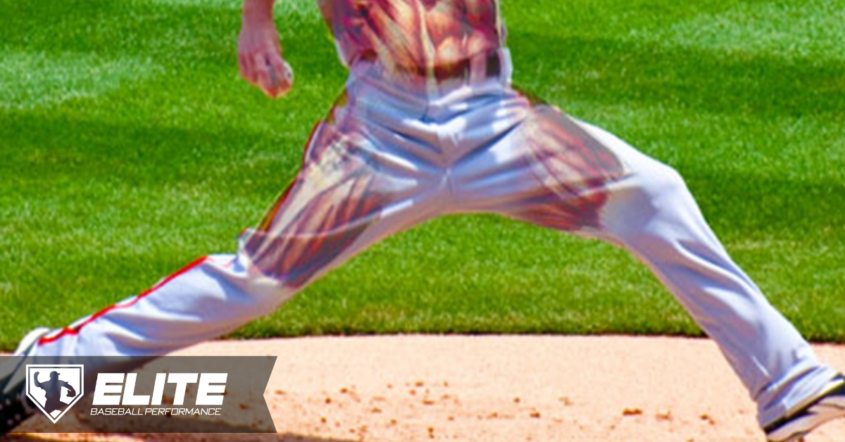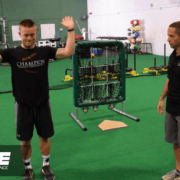How to Prevent Baseball Muscle Imbalances and Overuse Injuries
BASEBALL is a pattern overload sport, meaning the same movements are replicated thousands of times throughout a season. Since baseball is a one-sided sport, this PATTERN OVERLOAD has the tendency to create muscle imbalances, often times leading to injury and decreasing overall performance.

Baseball players often throw and swing from the same side of their bodies, because of this, muscle imbalances will inevitably occur over the course of the season if you fail to take preventative measures.
The stresses and loads specific to the game of baseball expose players to a few common biomechanical dysfunctions and muscular imbalances. Here are a few common problems that baseball players encounter, with suggestions on how to correct them.
WEAK SHOULDER AND SCAPULAR STABILIZERS
The key to shoulder health and throwing performance is building strong, resilient scapular and posterior shoulder muscles. 17 muscles stabilize the scapula, creating synergistic co‐contraction to stabilize the shoulder complex and guide movement.
Weakness of the scapular stabilizers and resultant bio-mechanics changes could result in:
- Abnormal stresses to the anterior structures of the shoulder
- Increased possibility of rotator cuff injuries
- Decreased shoulder complex neuromuscular control.
CLICK HERE for a complete J-BANDS™ routine to help build strong scapular and posterior shoulder muscles.
POOR THORACIC “UPPER BACK” MOBILITY
All rotational athletes need adequate thoracic spine (upper back) mobility in order to create appropriate separation during throwing motions and changes of direction.
Throwers who lack thoracic mobility, primarily rotation, often have issues with scapulo-thoracic mechanics during the pitching or throwing motion which will inevitably place stress on the anterior shoulder.
Compensatory movement patterns often occur due to lack thoracic mobility including lumbar extension (lower back arching). These poor movement patterns lead to low back pain, abdominal strains, and hip dysfunction.⠀
Here’s a quick and easy drill to maintain thoracic mobility:
TIGHT “HYPERTONIC” POSTERIOR ROTATOR CUFF
There is no doubt that baseball players and other overhead athletes get tight from throwing. Over the course of a season your muscles tend to tighten and loss of mobility ensues. The deceleration component of the throwing motion exposes the posterior rotator cuff to extreme eccentric workloads.
Simple strategies to maintain tissue and movement quality of the posterior shoulder motion can be effective and can prevent loss of motion and injury, while enhancing throwing performance. In our baseball performance programs, we recommend the use of soft tissue techniques focusing on a few key areas like the posterior rotator cuff, lats, and pecs.
POOR SCAPULAR UPWARD ROTATION
One of the biggest problems throwers face is scapular and shoulder dysfunction. More specifically, issues related to inadequate protraction and upward rotation of the scapula.
The tendency to lose shoulder and scapular mobility (primarily upward rotation) occurs due to the stress of the throwing motion disrupting the force couple between the upper trap, lower trap, and the serratus anterior. This rotation is essential to maintain proper shoulder joint centration while performing high velocity movements.
The SCAPULAR LIFT OFF is an effective drill that can be used as part of recovery or a warm-up to maintain the range of motion that we need to throw.⠀
DECREASED SHOULDER INTERNAL ROTATION
Increased external rotation is correlated with increased throwing velocity. Improving this range of motion is helpful for lighting up the radar gun. However it’s important to note that this added external rotation comes the possibility of anterior shoulder instability and a loss of internal rotation.
In many cases, throwers tend to have decreased internal rotation of the shoulder. This is often a result of excessive external rotation which is necessary for a throwing shoulder to perform at an elite level.
A small decrease in internal rotation in the throwing shoulder is normal in throwers, however if its excessive, it can become a risk factor. Glenohumeral Internal Rotation Deficit (GIRD) refers to a pathological loss of internal rotation in the throwing shoulder compared to the non-throwing shoulder. We can avoid this by preserving as much total shoulder range of motion as possible using the following techniques.
Cross Arm Stretch
Arm Circles
Scare Crows
POOR HIP MOBILITY
The hips of a thrower are subject to loss of internal rotation mobility especially in a pitcher’s front stride leg. This decrease in mobility that occurs over the course of the season can cause compensatory movement patterns as well as stress on the front of the shoulder and elbow when throwing.
To improve or maintain hip mobility here are a few of my favorite drills:
90/90 Hip Openers
Rear-Foot Elevated Hip Flexor Stretch
World’s Greatest Stretch
OVERALL MOVEMENT IMBALANCE
Because most players either throw and bat from one side exclusively, there is an obvious tendency for some sort of imbalance. You can’t perform 5,000 right-handed throws and zero left-handed throws during a season and not expect your body to compensate in one way or another.
The best way to prevent this from becoming detrimental to your development and performance is to include unilateral training techniques to improve your proprioception and body control.
Here are a few effective unilateral exercises that will help:
Non-Dominant Side Med Ball Throws
Side to Side Med Ball Slams
Non-Dominant Stance Leg RDL
Unilateral One Arm Row
Dr. Dale Bartek PT, DPT
Latest posts by Dr. Dale Bartek PT, DPT (see all)
- How to Prevent Baseball Muscle Imbalances and Overuse Injuries - January 8, 2019
- 5 Rotational Power Exercises for Baseball Performance - July 10, 2018











I played baseball for 9 years. When I hit high school weight training I seen imbalance in a few places. I’m now 40 yrs old now. I blamed it on bad form from being young and just throwing the weight around. I suspected baseball and looked it up and found this page.
First my chest is off from batting. Left chest is big and full. Being a right handed batter,the bat endes up in my left hand with a good left pectoral stretch with every swing. I never gave that attention to my right pectoral leaving it smaller than the left. Smaller on the under and outter pectoral.
My laterals are off also. Right lateral bigger than left. Opposite from chest.
This threw off my bench press. Each press would end with my right side wanting to twist inward And give the lateral some of the work. I have been working on bench form for a long time. Even dumbells .
In conclusion I now understand how I ended up this way and see there are videos and pages like this that can help. Thanks